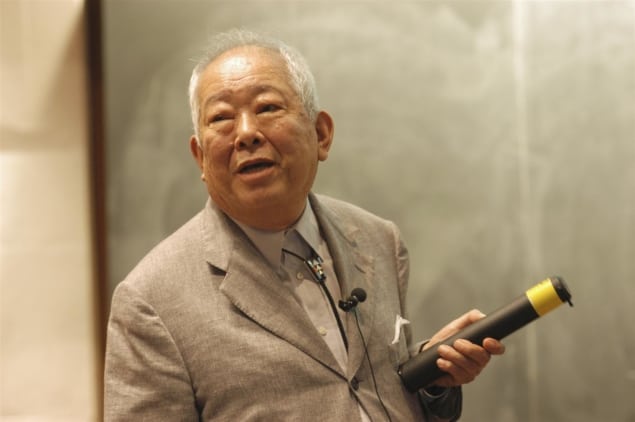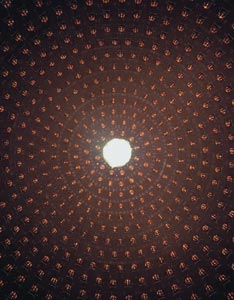
The Japanese physicist Masatoshi Koshiba, who shared 2002 Nobel prize for the detection of cosmic neutrinos, died on 12 November aged 94. One of the founders of neutrino astronomy, Koshiba’s most famous work involved detecting neutrinos from a distant supernova explosion using a vast detector based in a mine in central Japan. He shared half the 2002 Nobel prize with Raymond Davis Jr “for pioneering contributions to astrophysics, in particular for the detection of cosmic neutrinos”. The other half went to Riccardo Giacconi for his work on the discovery of cosmic X-ray sources.
Koshiba was born on 19 September 1926 in Toyohashi, Japan and graduated from the University of Tokyo in 1951. He then moved to the US to complete a PhD at the University of Rochester, graduating in 1955. After three years at the University of Chicago he moved back to Tokyo, where he remained for the rest of his career.
In the 1980s, Koshiba was instrumental in the construction of a neutrino detector located 1000 metres underground in a lead and zinc mine in Japan. Called Kamiokande, it was an enormous water tank surrounded by photomultiplier tubes to detect the flashes of light produced when neutrinos interacted with atomic nuclei in water molecules.
Koshiba created a legacy that will continue to drive the field forward making scientific advances for many years
Dave Wark
Although vast numbers of neutrinos are produced by the Sun, they are difficult to detect because they interact very weakly with matter. In 1967 Davis, who was then at the Brookhaven National Laboratory, built the first experiment to detect solar neutrinos. Consisting of 600 tonnes of dry-cleaning fluid in the Homestake gold mine in South Dakota, it detected less than half the flux of neutrinos predicted by widely accepted models of the Sun.
The results – known as the “solar-neutrino problem” – could be explained only if these models were wrong or if the neutrino had mass. For 20 years Davis’s detector was the world’s only solar neutrino detector. But 20 years later Koshiba and colleagues began taking data with their Kamiokande detector and in 1987 confirmed the lower-than-expected neutrino flux that was reported by Davis by detecting neutrinos from a distant supernova explosion. For this work, Davis and Koshiba were awarded the 2002 Nobel Prize for Physics.
Creating a legacy
In 1998, Kamiokande’s successor – SuperKamiokande – found convincing evidence for neutrino mass in the form of oscillations between tau and muon neutrinos, which required new physics beyond the Standard Model of particle physics. This result led to Takaaki Kajita, a former student of Koshiba, sharing the 2015 Nobel Prize for Physics with the Canadian physicist Arthur McDonald for the discovery of neutrino oscillation.
In comments to the Mainichi newspaper, Kajita said that Koshiba had taught him everything about physics. “I was very lucky to be able to meet Koshiba, and it was very important for me in becoming a scientist,” he said.

Neutrinos: ghosts of matter
Neutrino physicist Dave Wark from Oxford University in the UK, who has been involved with the Super Kamiokande experiment for the past two decades, says that it was Koshiba’s “force of will” that got Kamiokande approved in Japan and the Nobel laureate’s initiative that led to the creation of the huge photomultiplier tubes that have “been so important in the advance” of neutrino physics. “The sequence of Kamiokande leading to Super Kamiokande and now to Hyper Kamiokande has so far earned two Nobel Prizes, vindicating his original vision,” Wark told Physics World.
Wark adds that Koshiba was “a great guy to be around, filled with insight and energy and humour” and that Koshiba has “created a legacy that will continue to drive the field forward making scientific advances for many years.”
